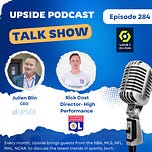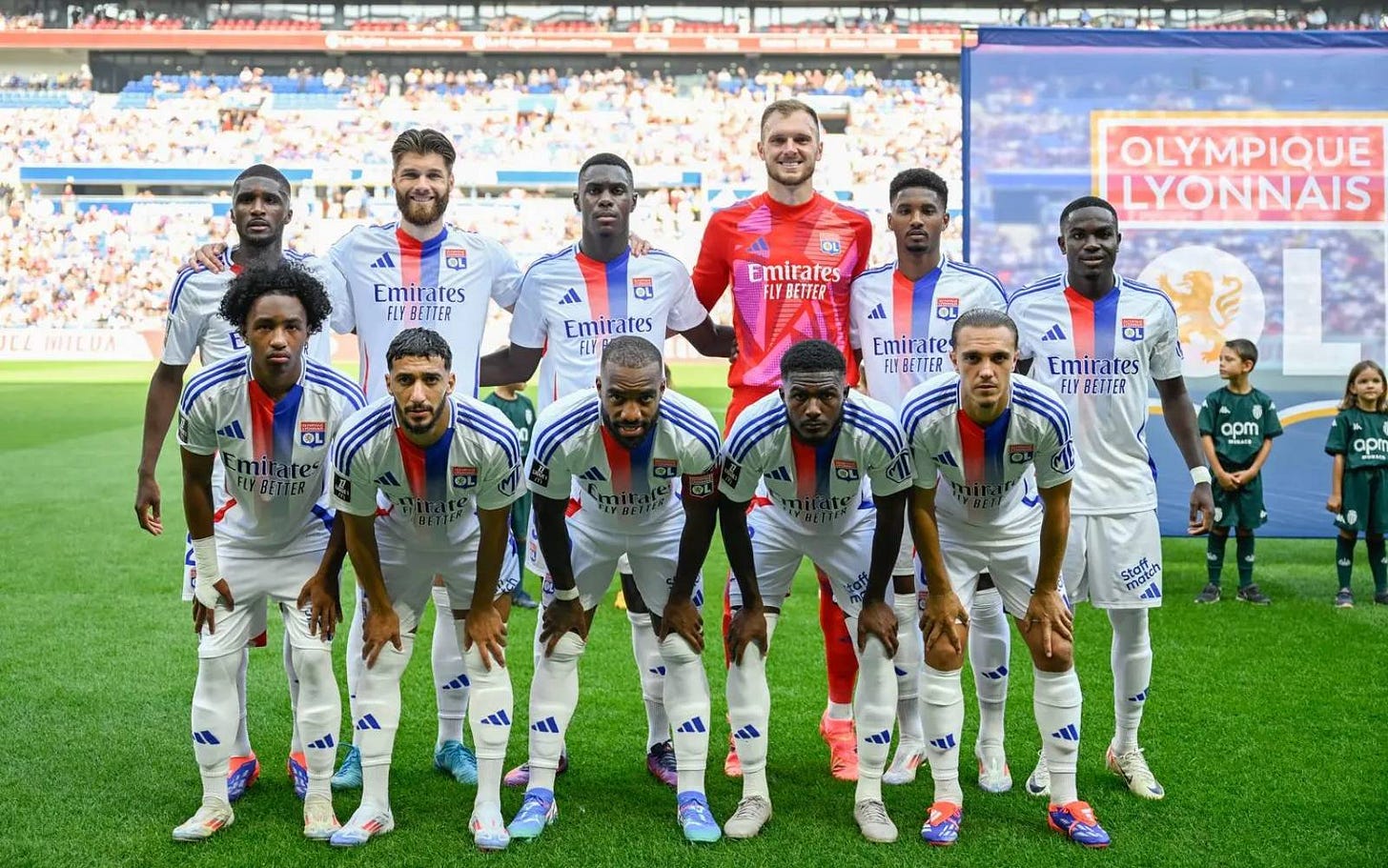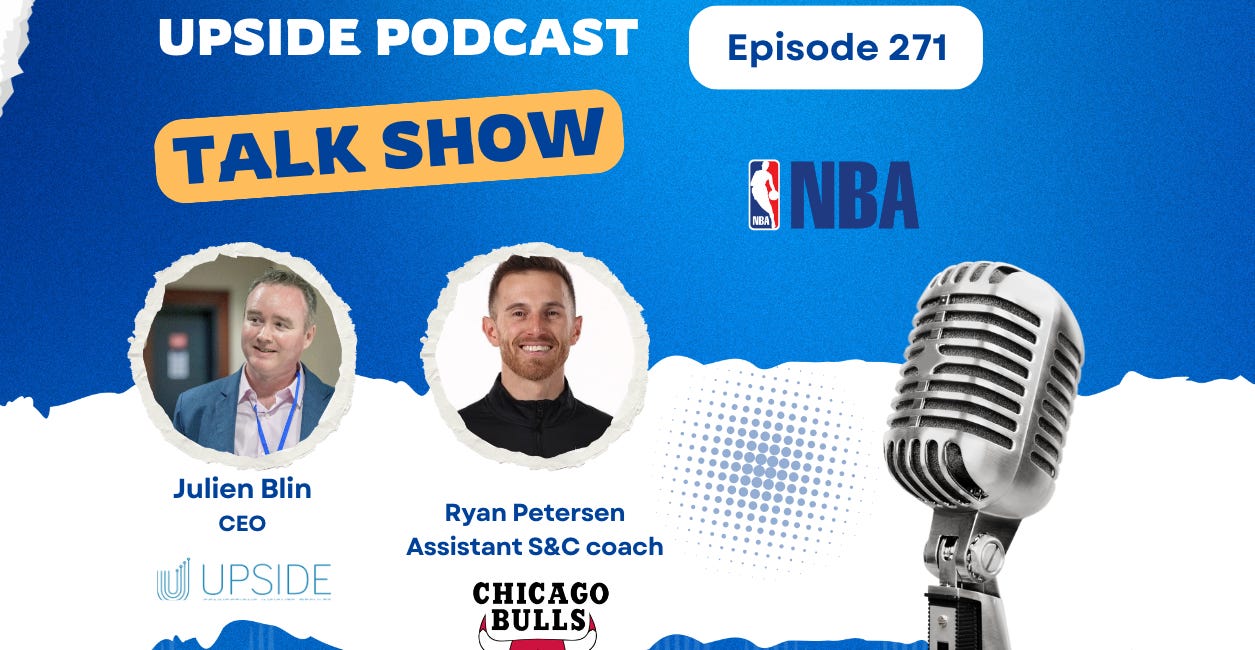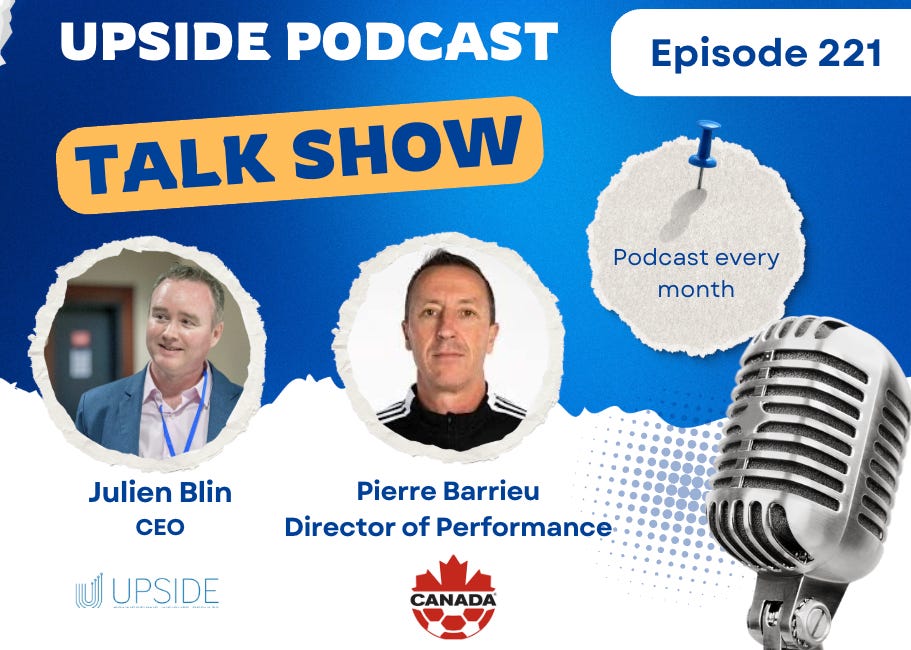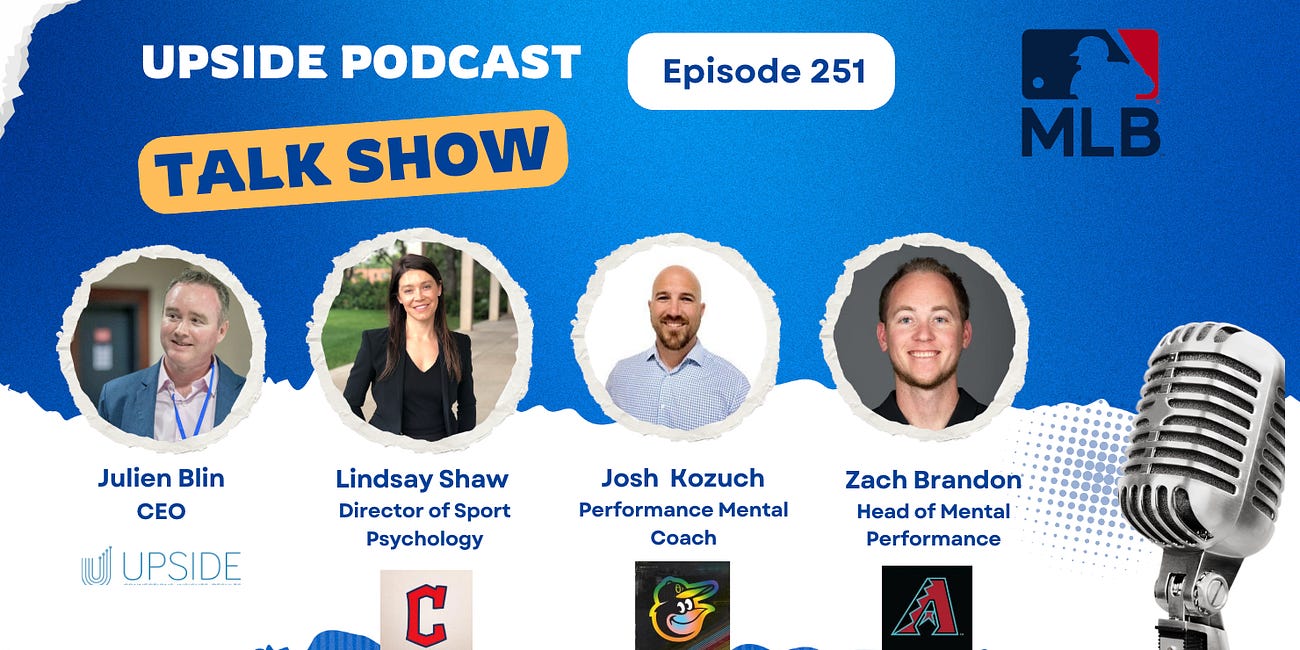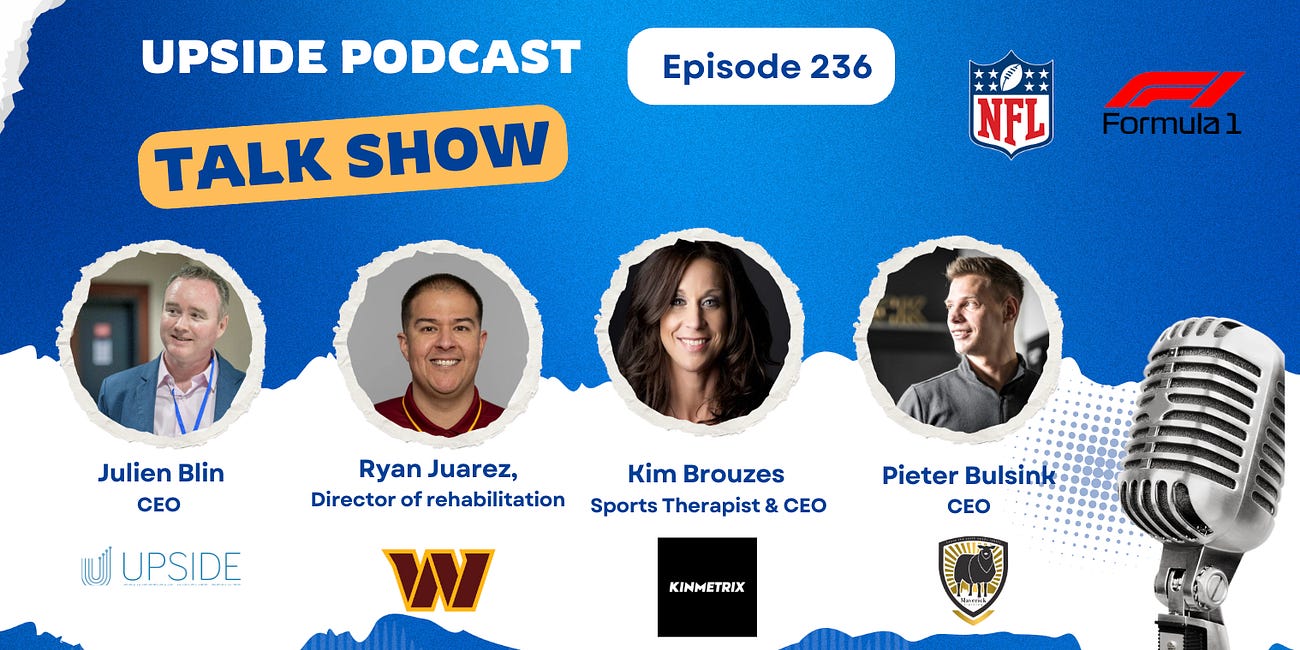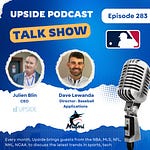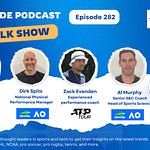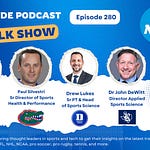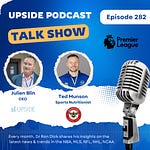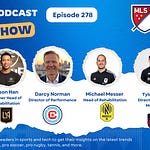Today we have the honor of interviewing Rick Cost the director of high performance at Olympique Lyonnais (Ligue 1), a leading European soccer team.
Here is a picture of the Olympique Lyonnais squad:
You can watch the video interview below by clicking on the Youtube link. You can also listen to the audio interview by clicking on the link at the top of the page:
📝Show Notes: During the interview with Rick Cost, we discussed his professional journey and the key experiences that shaped his path into high performance and ultimately led him to his current role as Director of High Performance at Olympique Lyonnais. We explored how he defines his role, his leadership philosophy, and the core principles guiding how he structures and develops his department.
Rick also shared his perspective on the differences between the U.S. and European approaches to sports performance, athlete management, and innovation. We then delved into his strategies for balancing training loads, recovery, and injury prevention throughout a demanding season. Finally, we spoke about the future of high performance — including the role of AI, data, and biomarkers in shaping the next generation of athlete development and performance management in football.
You can read the full transcript of the podcast interview with Rick located at the top of this blog post.
Here are the quotes from the interview with Rick:
1. Background & Path
“I’ve been in top sport for over 25 years now, and interestingly, I didn’t start in football. My journey began in Olympic sports like handball and field hockey. I studied physical therapy and human movement science, ran my own practice, managed a couple of gyms, and even advised national teams on high-performance structures. That broad exposure helped me understand performance from every possible angle.”
“When I finally moved into football in the early 2000s, it was a big achievement — football was still quite closed to outsiders then. But I brought something new to the table: I’d already been a physical therapist, a sport scientist, a strength coach, and even worked in analytics before analytics was a thing in sport. I touched every element of performance, and that gave me the perspective to later oversee entire departments.”
“The biggest advantage I had — and still have — is being both a medical professional and a sports scientist. That combination is rare today. Most of the people from my generation in high-performance leadership share that dual background. We’re like dinosaurs in a way — the last generation that deeply understands both the medical and performance sides.”
“People sometimes ask why I left my own successful practice to join a club full time. The truth is, it was partly financial and partly passion. Olympic sports are incredible, but they don’t pay. I had a child, I was working from 6:30 in the morning to 11 at night, and traveling constantly. Football offered stability and the ability to do what I loved full time, surrounded by the intensity and emotion of the game.”
“When I joined Feyenoord, I remember walking into the stadium and feeling the power of the supporters — it was life-changing. Once you experience that atmosphere, that passion, it sticks with you forever.”
2. Role & Philosophy
“At Olympique Lyonnais, I oversee the entire support structure — sports science, medical, strength and conditioning, research, analytics, nutrition, and psychology. My role is not to dictate, but to structure, align, and develop.”
“I always start by giving people purpose. Every staff member needs clear roles, clear responsibilities, and a developmental pathway. Without that, you don’t have a performance culture — you just have individuals working next to each other.”
“When I arrived, I did a maturity assessment of the environment. We were at stage two — good practices, but not yet repeatable. My mission is to move us through the stages of maturity until we reach level five, where everything becomes autonomous — where the system continuously improves itself in real time.”
“The key is building systems that are repeatable but flexible. We’re developing standard operating procedures, but I also believe in giving practitioners autonomy. In France, especially, you have to respect the culture — if you try to impose a strict model without room for individual color, you’ll hit a wall. In the U.S., you can be more standardized; in Europe, you need to lead through collaboration.”
“Leadership, for me, is about asking the right questions. I’ll never tell someone, ‘Do it this way.’ Instead, I’ll say, ‘Our goal is to build the best recovery system in France — how are you going to achieve it?’ Then I support them, challenge them, and make sure they have the resources to deliver.”
“I’m also responsible for budget strategy, innovation funding, and hiring. One of my biggest priorities is internal promotion — creating pathways so that people from the academy or support teams can move up when they’re ready. Consistency in culture starts with developing your own people.”
“Ultimately, my job is to take care of people — so they can take care of the players and each other. If we get that right, performance follows.”
3. US vs. Europe
“The biggest difference between the U.S. and Europe is how innovation is adopted. In Europe, implementation is evidence-driven. Clubs won’t integrate a technology unless there’s solid research and proven impact. In the U.S., the mentality is much more: ‘Let’s try it, see what happens, and refine later.’”
“When we went to the World Cup, we had infrared light beds, dry floating beds, cryo chambers — all sorts of recovery tools. We didn’t even know which ones worked best yet, but in the U.S., that didn’t matter. Players loved them. They believed that if something gave them even a one percent edge, it was worth it.”
“In Europe, you’d never get away with that approach. If it’s not backed by data or peer-reviewed research, it won’t be implemented. You need to show scientific proof — not just belief.”
“That difference also reflects cultural mindsets. In America, there’s a comfort with trial and error — if something fails, you move on and learn. In Europe, people are more conservative, more risk-averse. Both systems have strengths: the U.S. is more innovative, Europe is more consistent and structured.”
“The ideal world is somewhere in between — Europe becoming a little more open to experimentation, and the U.S. becoming a bit more critical in asking, ‘Does this actually solve a problem?’ If we can find that middle ground, that’s where high performance truly evolves.”
4. Training & Rehabilitation
“Managing training loads, recovery, and injury prevention is one of the hardest parts of the job — especially now with shorter preseasons and more congested schedules.”
“The core principle is adaptation — if you can adapt to specific intensities and volumes, you’ll be prepared for the demands of the season. But because preseasons are shorter now — sometimes only five weeks instead of eight — full adaptation is nearly impossible. That’s why recovery and freshness have become equally important.”
“We constantly balance adaptation and recovery. You can’t expect a player to perform 90 minutes every three days. Sometimes it’s 90-60-90-30 — that’s how you keep them in the sweet spot over a long season.”
“Recovery isn’t just physical — it’s mental, emotional, and physiological. You can do all the cryotherapy you want, but if a player’s emotionally drained, performance will drop. We have to manage all aspects of recovery to sustain elite performance.”
“There’s no perfect model. Things will go wrong, but the goal is to make informed decisions, to understand each player individually, and to continually improve. It’s critical thinking and constant adaptation.”
“We also explore new modalities — like vagus nerve stimulation, which targets the parasympathetic nervous system to improve stress recovery. It’s early, but technologies like these could become part of future recovery strategies.”
5. Talent Pool in France and the Quality of the Medical System and Sports Science
“I actually am very surprised about the level of the players that come from the academies (..) I think it is due to the individual quality of the medical system. In the sports science system, it is a very, very high level, and I think that is the case with all the clubs”.
“French people really love the game (..) They go to a club because they love the game (..) We don’t start with specializing too young, but I think we leave them in the clubs just long enough and then pick them up at an older age which is a great approach”.
6. Innovation & Future
“The biggest innovation of the past decade was GPS — it changed the way we quantified movement, workload, and intensity. The next wave will be about biomarkers — real-time, non-invasive data that tells us what’s happening inside the body.”
“Imagine a world where you don’t need to fill out questionnaires or draw blood. You just walk through a scanner at the training ground, and it instantly reads your fatigue, hydration, stress, and readiness. That’s the future — and it’s closer than we think.”
“AI will be the key to that future. It will help us analyze huge volumes of data and individualize training and recovery. Instead of generic load management, we’ll have player-specific algorithms that predict what each athlete needs to perform and stay healthy.”
“We’ve been measuring heart rate since the 1970s — but that’s just scratching the surface. The next frontier is understanding the biochemical and neural states of the player in real time. That’s when we’ll truly move from reactive to proactive performance management.”
“I think within a decade, we’ll have systems that use AI and biomarkers together to predict fatigue, optimize recovery, and maybe even prevent injuries before they happen. That’s the direction we’re heading.”
You may also like:
🎙️ Upside Chat with Ryan Petersen, Assistant S&C coach, Chicago Bulls (NBA) on His Background, Approach Towards Training, Innovation, Recovery, and More.
Today we have the honor of interviewing Ryan Peterson the assistant S&C coach for the Chicago Bulls, a top NBA team.
🎙️ Upside Chat with Pierre Barrieu, Director of Performance (Canada Soccer) & UEFA Technical advisor & FIFA Freelancer
Today we have the honor of interviewing Pierre Barrieu, the director of performance for the Canadian national men soccer team, and a technical advisor for the UEFA and also works as a freelancer for the FIFA.
⚾ Upside MLB Group Video Chat with Lindsay Shaw (Guardians), Zach Brandon (Arizona Diamondbacks), Josh Kozuch (Baltimore Orioles) on Mental Performance
Today we have the honor of interviewing a group of MLB practitioners that are experts in mental performance and preparation.
🔥Upside NFL/F1 Group Chat with Pieter Bulsink (Maverick Training/F1), Kim Brouzes (Kinmetrix), Ryan Juarez (Commanders/NFL) On Neck Training
This week we have the honor to interview a group of rehab and performance experts across the NFL and F1. We discussed neck training, their approach to neck training, the various modalities, best practices and trends that they are seeing in the market.

